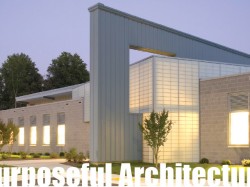
Earlier this year professionals and parents of children with autism spectrum disorders (ASD) gathered together for the Adult Services and Residential Think Tank at the AutismOne/Generation Rescue Conference in Chicago, Illinois. The presenting panelists included Dr. Dan Burns, Dr. Stephen Shore, Professor James Adams, Robert Krakow, Esq., Anna Huntley, Vicki Martin, RN, Barbara Fischkin and Polly Tommey.
The group was assembled to offer open dialogue about the need for expanded choices for both living and working environments for individuals with ASD. As a whole, the group agreed on several key points:
- Currently not enough options exist in most states for adults with ASD
- More residential options must be created specifically for individuals with ASD, with appropriately trained staff and programs geared to this population
- Federal funding should follow a child or an adult from state to state
- Parents of children with ASD must join in a united front to address residential options for spectrum adults
- A central source of information on residential programs avail-able across the country must be established
Ms. Martin, RN, presented various residential options for adulthood and the pros and cons of each including but not limited to: independent living, supported living, living with family, supervised group living (traditional group home and family consortium), adult foster care, nursing home, private non-profit community, and the European village. She expressed that while many of these models are geared in general to the developmentally-delayed population, a new model is needed tailored specifically for adults with ASD. This model should incorporate elements relevant to this community, including non-toxic and sensory-friendly environments, whole food diets, biomedical intervention, staff specifically trained in ASD, and therapies individualized to the needs of those with ASD.
With great humor, Dr. Shore stated, “Only hermits live independently. All of us live with some level of inter-depend-ability:’ His comment was a challenge to the autism community to rethink the idea of “independent living” and instead consider the interdependent nature of a person with his environment. Dr. Shore emphasized that a huge wave of children with ASD are preparing to transition to adulthood, and residential supports that reflect this interdependency of life must be created now to meet their needs.
As a mother of an 18-year old on the spectrum, my desire is for our son to be happy. We know he is happiest when he is socially interacting with others who have similar interests and the patience to hear the repeated stories about those interests. More often than not, this means other individuals on the spectrum. Our son is most successful and feels most successful when he is accepted without judgment by his friends. Many attending parents were attracted to the “model community” concept presented by Polly Tommey of The Autism Trust, which includes various types of residential housing, vocational and employment opportunities as well as social settings. These parents believe their children are happiest amongst their peer group and the model community setting best supports this desire.
Finding federal or state funding was echoed again and again as a major challenge in developing a community setting for individuals with ASD. Outside the typical single group home setting that provides residence for four to eight intellectually or developmentally challenged individuals, other community models were frequently rejected by government agencies or not supported under state regulations due to the institutionalism of the setting. It was stressed that any newly-created model must have diversity in funding sources for it to be successful including possibly HUD, Federal Home Loan Bank, Medicare, grants and private contributions. What was apparent was that all different kinds of opportunities are just beginning to be developed for our ASD children. The challenge is that these residential settings may exist in only a few states, and a child’s funding will not typically follow him or her across state lines.
The group agreed that while there are many vocational opportunities and great nonprofit organizations supporting the disabled population, there are very few specifically targeting the autism population, a group whose needs can be very different than those of intellectually and developmentally disabled individuals. Staff training would need to be autism specific. The home settings would look very different, with appropriate colors, materials, lighting and acoustics that take into account the sensory sensitivities common in autistic adults. The relationship of rooms would address personal space concerns. Security and related site development might be handled differently to address the fight or flight challenges of these individuals. Home-based vocational opportunities would reflect the need for organized work spaces and continuous reinforcement to promote success.
From a legislative standpoint, laws may have to be amended on a state by state basis to allow alternative living environments such as agricultural or vocational communities. Alternative funding resources and grants will have to be sought or established for the start-up capital necessary to create these new settings.
It was unanimously agreed that parents of children on the spectrum need to unite as the driving force behind increased programming and residential options for adults with ASD. Early leaders in this effort include groups such as TACA, AutismOne and the Autism Society of America. With time and concerted efforts, the face of adult living environments for individuals with ASD will significantly change for the better.


